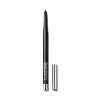What's inside
What's inside
 Key Ingredients
Key Ingredients

 Benefits
Benefits

No benefits
 Concerns
Concerns

 Ingredients Side-by-side
Ingredients Side-by-side

Hydrogenated Coco-Glycerides
EmollientTriethylhexanoin
MaskingRicinus Communis Seed Oil
MaskingDipentaerythrityl Hexahydroxystearate/Hexastearate/Hexarosinate
Skin ConditioningCopernicia Cerifera Wax
Polymethyl Methacrylate
Ozokerite
Emulsion StabilisingTocopherol
AntioxidantAscorbyl Palmitate
AntioxidantLecithin
EmollientCitric Acid
BufferingMica
Cosmetic ColorantCI 77891
Cosmetic ColorantIron Oxides
CI 77000
Cosmetic ColorantCI 42090
Cosmetic ColorantCI 77163
Cosmetic ColorantCI 75470
Cosmetic ColorantCI 77289
Cosmetic ColorantCI 77288
Cosmetic ColorantCI 77510
Cosmetic ColorantCI 77742
Cosmetic ColorantCI 77007
Cosmetic ColorantCI 19140
Cosmetic ColorantHydrogenated Coco-Glycerides, Triethylhexanoin, Ricinus Communis Seed Oil, Dipentaerythrityl Hexahydroxystearate/Hexastearate/Hexarosinate, Copernicia Cerifera Wax, Polymethyl Methacrylate, Ozokerite, Tocopherol, Ascorbyl Palmitate, Lecithin, Citric Acid, Mica, CI 77891, Iron Oxides, CI 77000, CI 42090, CI 77163, CI 75470, CI 77289, CI 77288, CI 77510, CI 77742, CI 77007, CI 19140
Isododecane
EmollientPolymethylsilsesquioxane
Candelilla Wax Hydrocarbons
Synthetic Wax
AbrasiveTrimethylsiloxysilicate
EmollientCopernicia Cerifera Wax Extract
Hydrogenated Polydicyclopentadiene
Dipentaerythrityl Pentaisononanoate
EmollientTrihydroxystearin
Skin ConditioningSynthetic Beeswax
Emulsion StabilisingDisteardimonium Hectorite
StabilisingPropylene Carbonate
SolventCopernicia Cerifera Wax
Silica
AbrasiveSynthetic Fluorphlogopite
Tin Oxide
AbrasiveAlumina
AbrasiveBenzyl Alcohol
PerfumingPentaerythrityl Tetra-Di-T-Butyl Hydroxyhydrocinnamate
AntioxidantCI 77499
Cosmetic ColorantMica
Cosmetic ColorantCI 77510
Cosmetic ColorantCI 77266
Cosmetic ColorantCI 77891
Cosmetic ColorantIsododecane, Polymethylsilsesquioxane, Candelilla Wax Hydrocarbons, Synthetic Wax, Trimethylsiloxysilicate, Copernicia Cerifera Wax Extract, Hydrogenated Polydicyclopentadiene, Dipentaerythrityl Pentaisononanoate, Trihydroxystearin, Synthetic Beeswax, Disteardimonium Hectorite, Propylene Carbonate, Copernicia Cerifera Wax, Silica, Synthetic Fluorphlogopite, Tin Oxide, Alumina, Benzyl Alcohol, Pentaerythrityl Tetra-Di-T-Butyl Hydroxyhydrocinnamate, CI 77499, Mica, CI 77510, CI 77266, CI 77891
Ingredients Explained
These ingredients are found in both products.
Ingredients higher up in an ingredient list are typically present in a larger amount.
This ingredient is used to impart a blue color. It is not water-soluble.
It goes by two different names:
1. Ferric Ferrocyanide: a synthetic dark blue pigment
2. Ferric Ammonium Ferrocyanide: a synthetic blue pigment, also called Prussian blue
In the EU, both of these colors must be labeled as 'CI 77510'.
Learn more about CI 77510Ci 77891 is a white pigment from Titanium dioxide. It is naturally found in minerals such as rutile and ilmenite.
It's main function is to add a white color to cosmetics. It can also be mixed with other colors to create different shades.
Ci 77891 is commonly found in sunscreens due to its ability to block UV rays.
Learn more about CI 77891Copernicia Cerifera Wax comes from a palm tree native to Brazil; another name for this ingredient is Carnauba Wax.
This ingredient is used to thicken texture and also leaves behind a film when applied.
Fun fact: This wax has the highest melting point of all natural waxes and low solubility.
Learn more about Copernicia Cerifera WaxMica is a naturally occurring mineral used to add shimmer and color in cosmetics. It can also help improve the texture of a product or give it an opaque, white/silver color.
Serecite is the name for very fine but ragged grains of mica.
This ingredient is often coated with metal oxides like titanium dioxide. Trace amounts of heavy metals may be found in mica, but these metals are not harmful in our personal products.
Mica has been used since prehistoric times throughout the world. Ancient Egyptian, Indian, Greek, Roman, Aztec, and Chinese civilizations have used mica.
Learn more about Mica